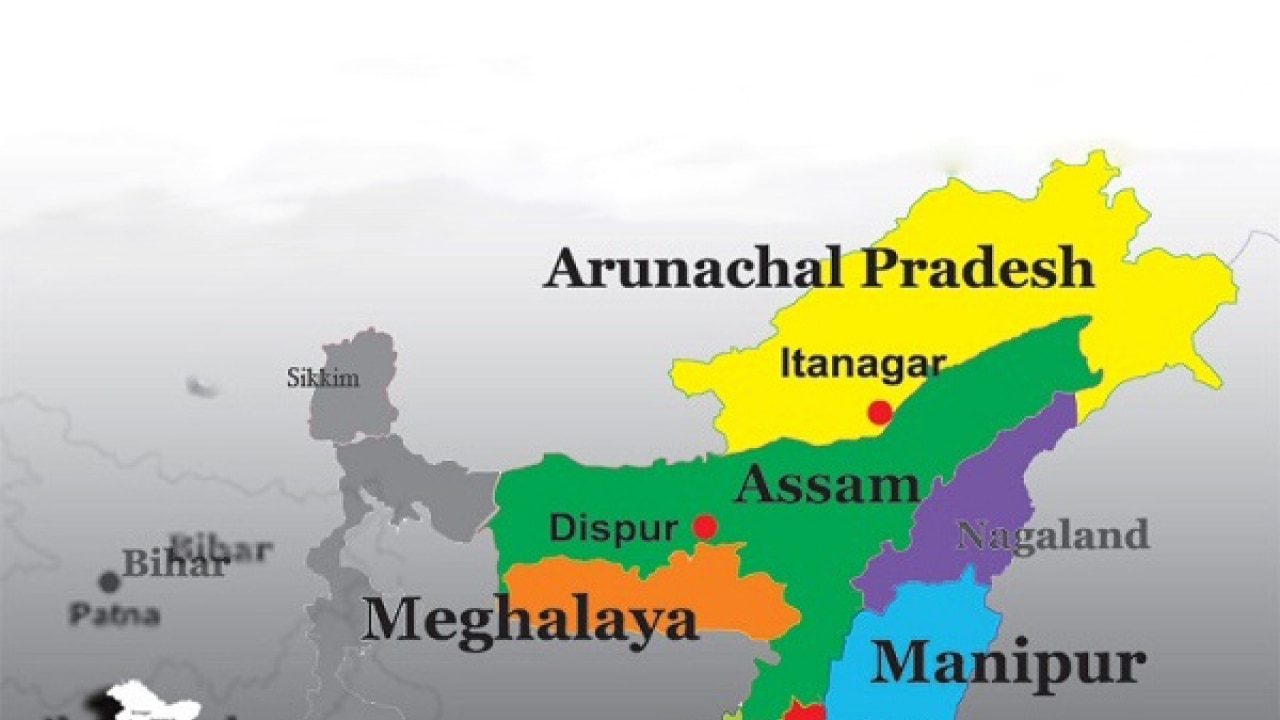
Kuknalim is a word made from two Naga dialects: 'Kukna' in Chang tribal dialect means victory and 'Lim' in Ao tribal dialect means land. So Kuknalim means "victory to the land". It is a Naga war cry. It was used by Prime Minister Narendra Modi when he visited the state of Nagaland to grace the annual Hornbill festival in 2014. During the course of his speech the Prime Minister not only praised the Naga people and the State but also emphasised the importance of India’s northeast to the country. In fact, he summed it up by calling India’s northeast a Natural Economic Zone for the country. He mentioned that other states aim for Special Economic Zones whereas the states from the northeast should have plans for Natural Economic Zones.
Listening to the Prime Minister, I wondered, how this was going to be possible. I realised, of course, that he was not talking about something unattainable. India’s northeastern states have rich bio diversity and produce a vast variety of flowers, fruits, herbs and other farm produce, unique to the region and also renowned internationally. For example, the hottest chili in the world, the King Naga Chili – or the Raja Mircha finds its way to Costa Rica for production of the Naga Jolokia sauce. The wild honey from Meghalaya is renowned for its nutritional values and is sold in organic stores internationally. Mizoram produces over 7 million tonnes of Anthurium flowers annually and exports them to UK, UAE and Japan. Ginger, turmeric, herbs like rosemary and basil, fruits like strawberry and pineapple are a few other examples. Therefore, given their natural resources, India’s northeastern states can definitely strive to transform themselves into Natural Economic Zones.

So where is the bottleneck? Why is India’s northeast not succeeding in reaching its produce to markets across India and the world? Why, with one of the highest literacy rates in the country, is there high level of unemployment in these states and people have to travel to other major cities for jobs? Why are the people not able to use the natural ecological advantages of their states to convert them into economic opportunities, just as the Prime Minister suggested?
Let us examine the key challenges that our northeast states face in realising their potential as Natural Economic Zones:
The first issue is of the lack of awareness. Travelling through the rural parts of the states of Meghalaya, Mizoram, Manipur and Nagaland you quickly grasp the inadequacy with which a farmer struggles. He or she has no clue of the international pricing available for their produce. It is only recently that state-driven communication of the Naga King Chili has made farmers in Nagaland aware of its branding and value. If you can create awareness and pride for one crop, why not for others as well? Most produce in these states is grown organically and with proper skilling and awareness their farmers can be empowered with the understanding of the opportunities for their produce in domestic and international markets.
The second issue is that in these states, farming happens on small land holdings that give a low yield to individual farmers in terms of pricing. However, most of these states come under the tribal schedule-6 system, where traditional village institutes such as the Durbar Shnong, in Meghalaya for example, can be used to create farmer/producer companies for collective good. The Government of Meghalaya, under its Integrated Basin Development and Livelihood Program, has launched Aquaculture, Apiculture, Sericulture and Livestock Missions to organise their people at the block and village level, and has focused on giving their produce, market and value chain access by consolidation at the village level itself.

It is the third issue, or roadblock (quite literally) that most governments in the northeast are finding difficult to surmount– the challenge of logistics. Lack of proper road connectivity and limited rail and air connectivity means that these states spend 16 times more in rupee value and 6 times more in terms of time, than other states do, on the logistics of transporting their natural produce from farm to the market. This creates a huge disincentive and remains a constant point of frustration for the people and the governments of the northeast. But with the Bangladesh, Bhutan, India and Nepal (BBIN) Motor Vehicle Agreement opening up the thoroughfare of passenger and commercial vehicles between these nations, there is a hope to connect their produce via the much closer Bangladesh ports and, thereby, reducing logistics costs by half and time by one-third.
In conclusion, if the Prime Minister is sincere about transforming India’s north-east into a Natural Economic Zone, he will need to focus on building road, rail and air infrastructure between the northeastern states, and also with the rest of India. He will also have to focus on Skill India Missions that are being implemented in these states and work with the state governments to create non-migratory skills and jobs instead of just focusing on the hospitality and beauty sector skills that the people of the region are well known for in other states. The Prime Minister, along with these state governments, will need to work on a skills-ecosystem that could undertake skilling for food processing, organic farming, online e-tailing, packaging, logistics, quality processing etc. Last but not the least, he will need to guide the Agriculture department in New Delhi to create a brand for the produce of India’s Natural Economic Zones – India’s northeast. Only then success and victory of this mission is possible. Only then can we ensure Kuknalim is a reality for the Northeast of India and its people.
The author is Chairperson, IEF and Executive Director, SCA Group.